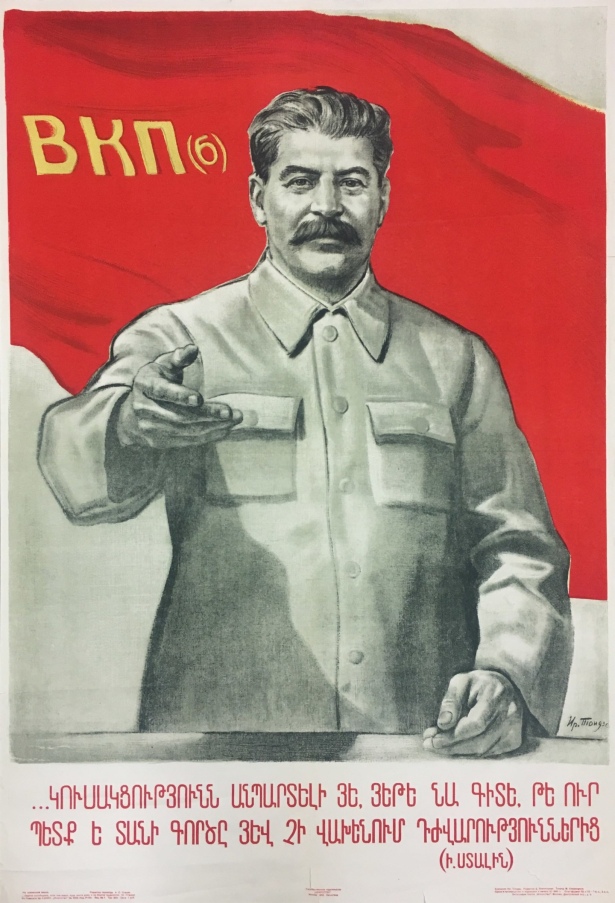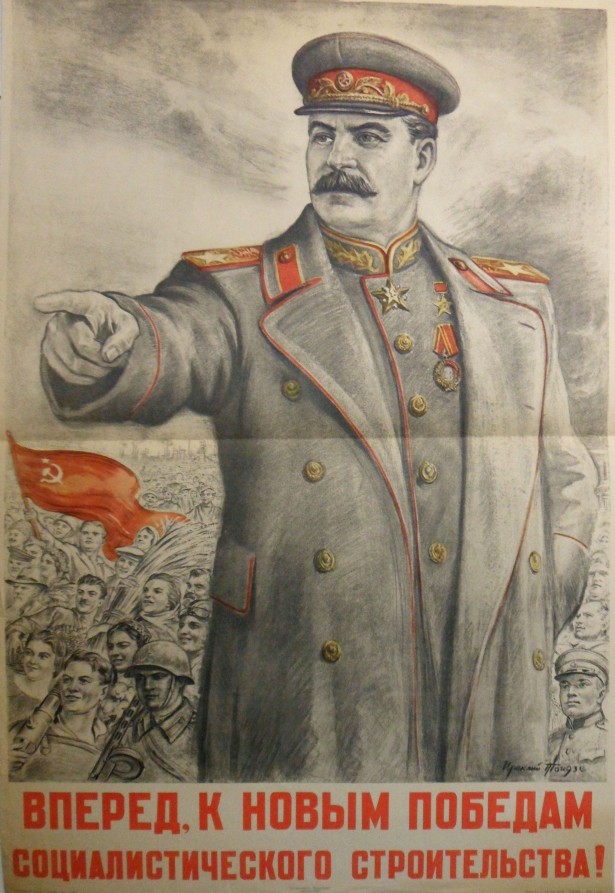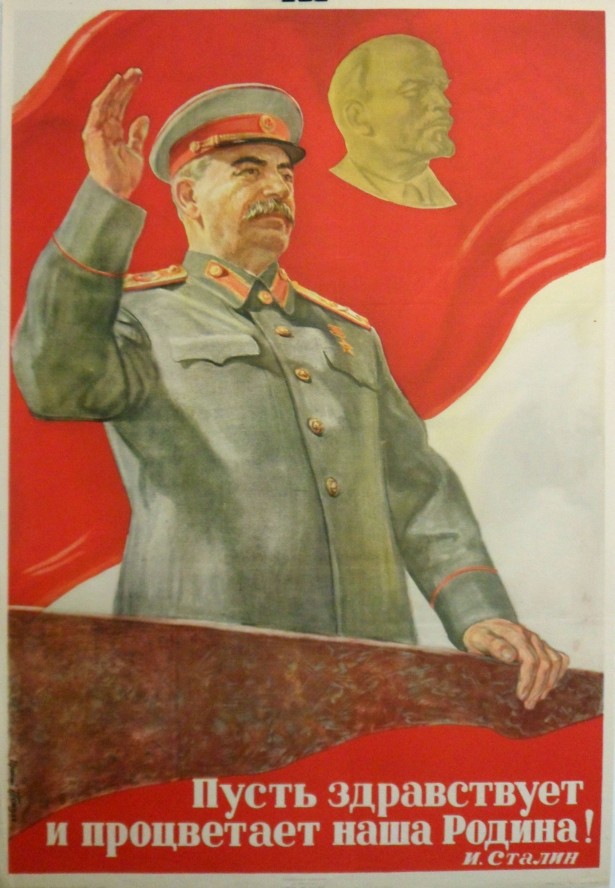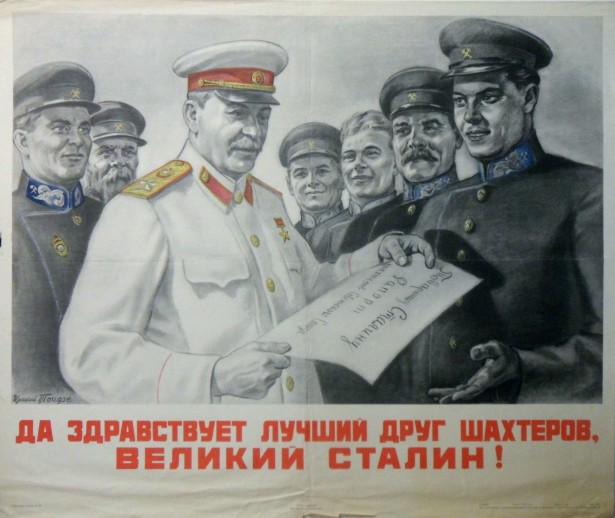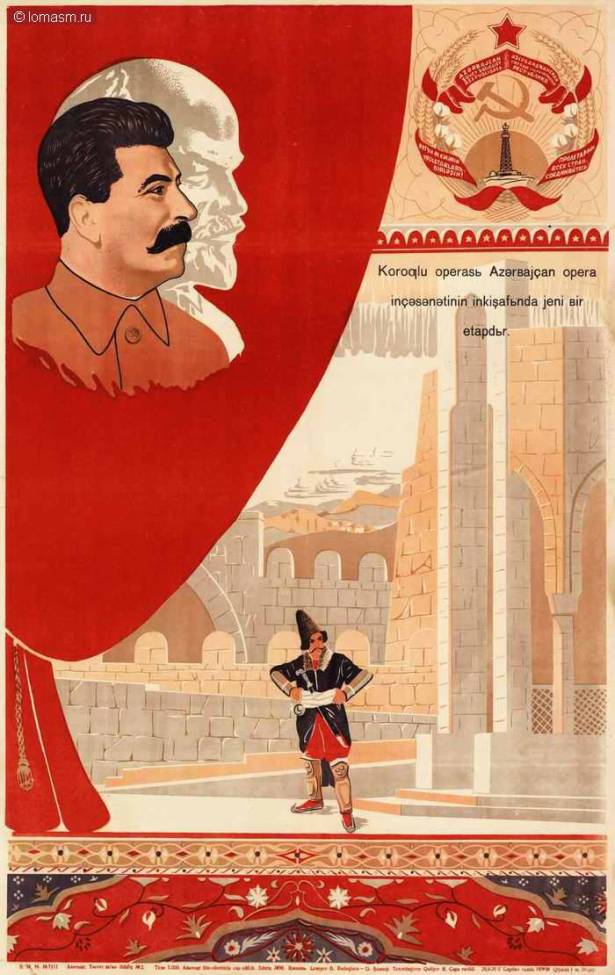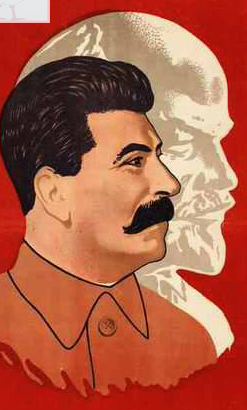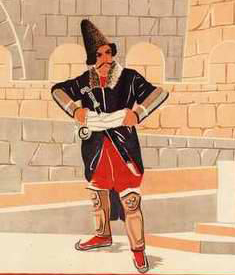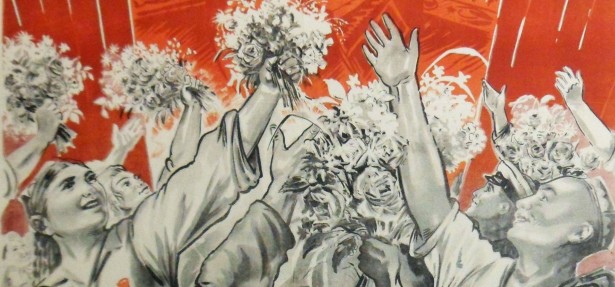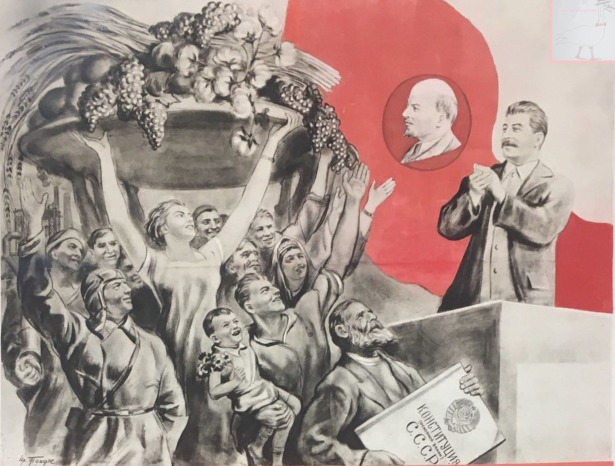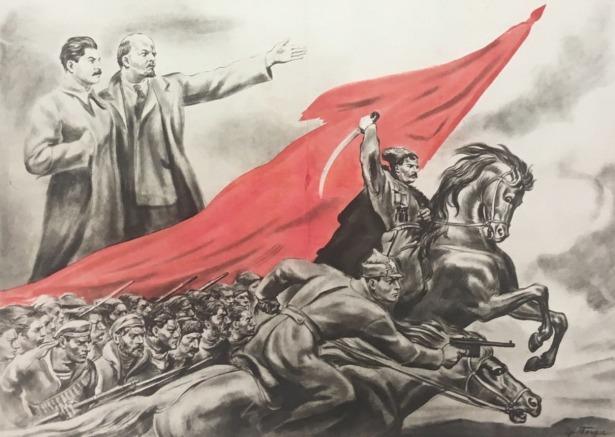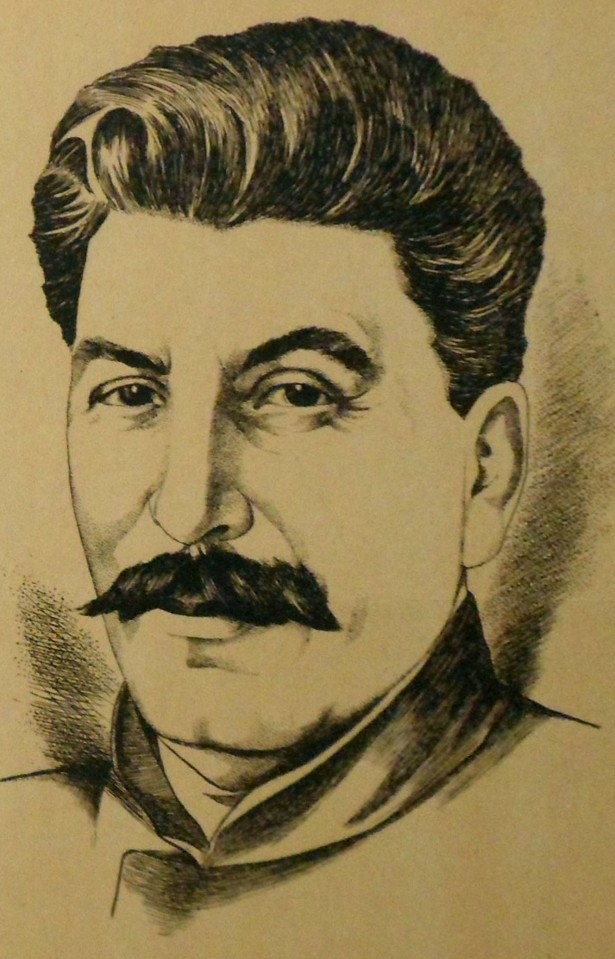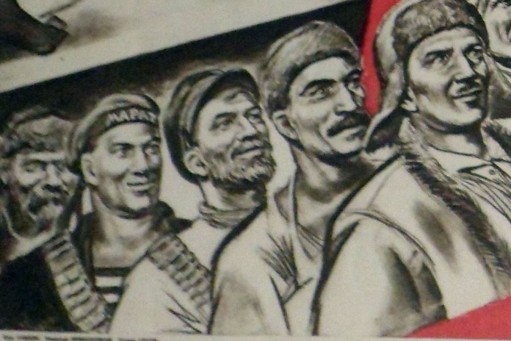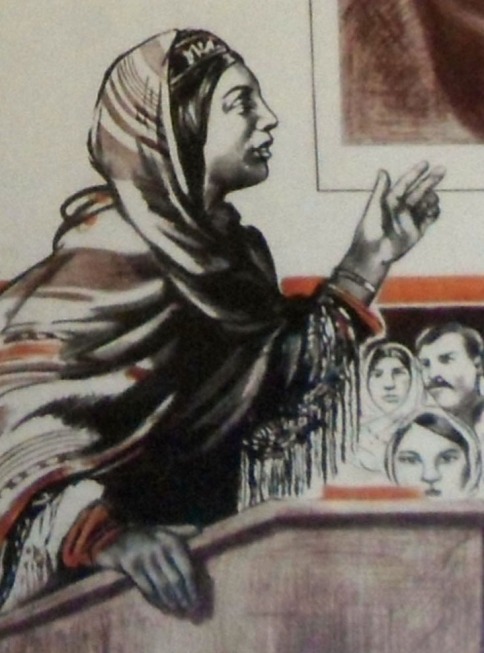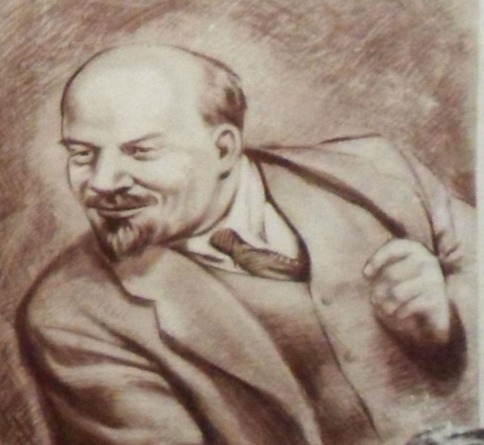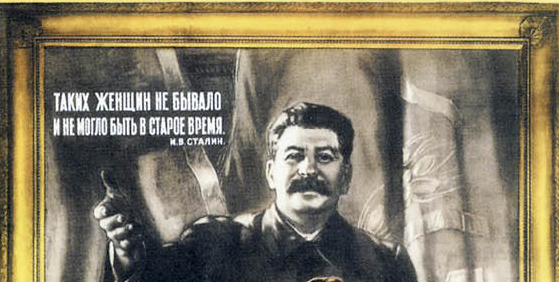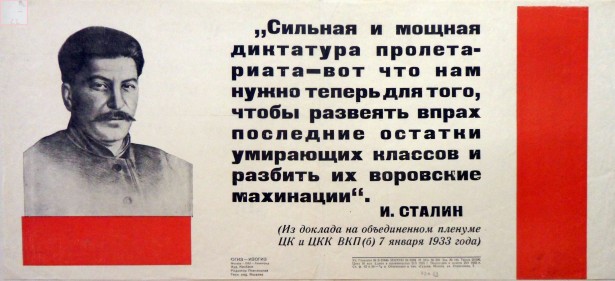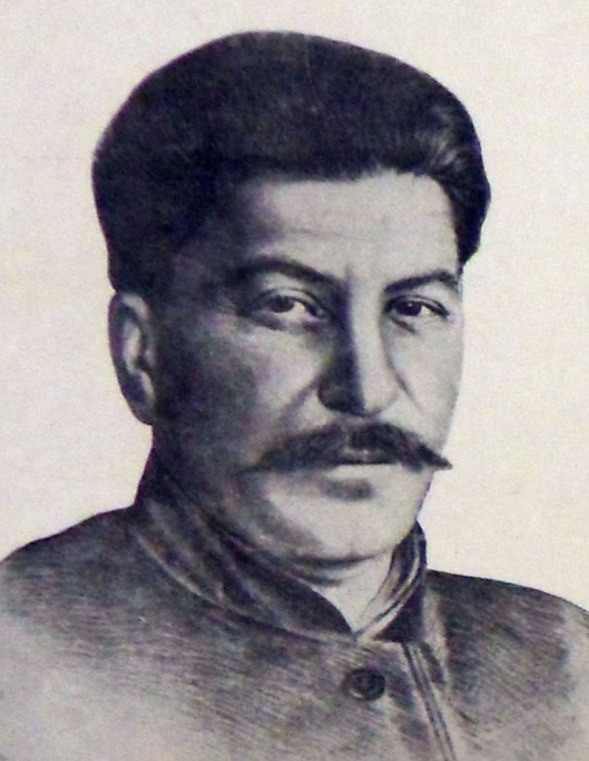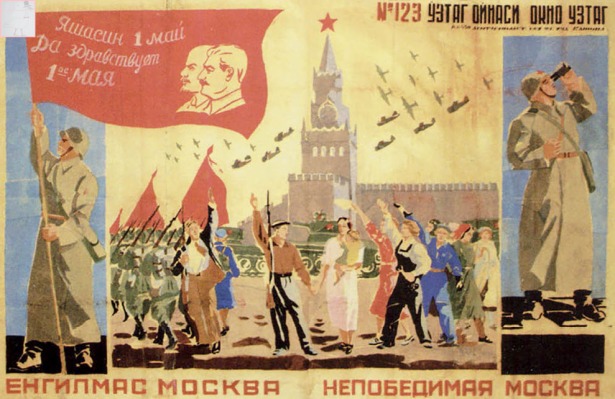
Nadezhda Kashina (Надежда Кашина), Invincible Moscow. (Long live the 1st May) (Непобедимая Москва. (Да здравствует 1-ое Мая), 1942
Stalin poster of the week is a weekly excursion into the fascinating world of propaganda posters of Iosif Stalin, leader of the USSR from 1929 until his death in 1953.
Here, Anita Pisch will showcase some of the most interesting Stalin posters, based on extensive research in the archives of the Russian State Library, and analyse what makes these images such successful propaganda.
Anita’s fully illustrated book, The personality cult of Stalin in Soviet posters, 1929 -1953, published by ANU Press, is available for free download here, and can also be purchased in hard copy from ANU Press.
TASS (Telegraph Agency of the Soviet Union) window posters were a return to the earlier idea of ROSTA (Russian Telegraph Agency) windows, which originated in 1919 as satirical posters that were heavily influenced by the traditional lubok and featured political themes.
In 1919, ROSTA began publishing newspapers, but chronic shortages of paper led to the idea of pasting short news articles and agitational materials up onto walls and in empty shop windows. The windows drew crowds and the idea expanded from Moscow to the provinces.
On 23 June 1941, Aleksandr Gerasimov, head of the Organising Committee of the Union of Soviet Artists, approved a proposal by Mikhail Cheremnikh, Nikolai Denisovskii and Pavel Sokolov-Skalia, to create a new propaganda studio in Moscow based on the ROSTA model.
The first TASS poster appeared on 27 June 1941. While initially the subject matter of posters was derived from Party directives, orders, news items and then Stalin’s speeches, artists and writers were soon able to submit their own ideas for designs for approval.
TASS posters were seen as an important part of the war effort, with Sokolov-Skalia claiming in 1943: ‘My weapon is the three hundred posters I created during the war.’ During the war, the TASS poster workforce increased from about 12 to nearly 300 employees, and one poster was produced for nearly every day of the war.
The posters were large in scale and, unlike most other posters of the Soviet period, were usually created from complex stencils rather than lithographs, some demanding 60 to 70 different stencils and colour divisions.
The use of stencils meant that each poster was printed by hand, hence the painterly look of the posters. This was a labour-intensive process and mobilised a number of artists and craftspeople in the service of the war, while limiting reliance on machinery. It also meant that editions were limited, usually to an issue of a few hundred each.
After the disastrous first months following the German invasion of the Soviet Union, 1942 saw some victories for Soviet troops, and propaganda made much of good news at last.
Monumentalist and graphic artist Nadezhda Kashina’s TASS poster of April 1942, produced for May Day festivities, celebrates Soviet success in forcing the Germans to pull back from Moscow in January. Although Moscow remained under threat for some considerable time, this constituted a significant victory after a string of heavy battle losses and was used to encourage the population in the belief that the USSR would ultimately prevail in the war.

Festive pastel colours show Muscovites celebrating their success in forcing the invading Germans out of Moscow
This horizontal format poster takes the form of a tryptich. The largest central image, in pastel tones with splashes of festive red, blue and yellow, shows the Spassky tower in the background, defended by aircraft flying in formation in a golden sky and a barricade of tanks.
In the foreground, a partisan raises his right hand in a gesture of victory, while his left hand holds that of his wife, who carries their toddler in her arms — Moscow is now safe for women and children.
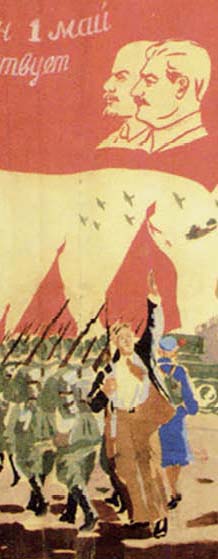
Soldiers depart under the protective banner of Lenin-Stalin
The left side of the middle panel is devoted to the military sphere, which includes another partisan, a line of soldiers, and one woman in military uniform. Significantly, the military personnel are departing.
The right side of the panel is devoted to the domestic sphere and is populated by women, some dressed in overalls and carrying tools, one an aviator, and another, perhaps, a nurse.

Moscow is safe once more for women and children
On either side of the main image are portrait-oriented images of Soviet soldiers. On the left, the soldier wields a banner with the slogan ‘Long live the 1st of May’ and sharply outlined profile images of Lenin and Stalin, both with plain collars (ie. Stalin is not in military uniform).
The banner crosses over into the panel of the central image and protectively covers the departing soldiers of the Red Army, as well as the aircraft in the sky.Thus, both Stalin and Lenin are invoked as spiritual protectors of the soldiers.
On the right, a soldier looks to the sky with binoculars, still vigilant against the return of the enemy. Both soldiers look away from the central image, in the manner of sentries watching for external threats.

Stalin and Lenin are equals
The poster is captioned at the bottom with the words ‘Invincible Moscow’ in Uzbek and Russian. All posters produced in Tashkent had to be published with text in both Uzbek and Russian.
The poster was published in Uzbekistan by UzTAG (Uzbek Telegraph Agency) — many artists were evacuated during the battle of Moscow and continued to produce posters in Tashkent and Kuibyshev. (This led to some confusion in numbering.)
This is the final edition of Stalin Poster of the Week. I would like to thank my many loyal readers for seeing this through with me, and particularly those who have made contact to discuss various aspects of the posters, Stalinism and personality cults. I have thoroughly enjoyed your company.
Anita Pisch‘s book, The personality cult of Stalin in Soviet posters, 1929 – 1953, is now available for free download through ANU Press open access, or to purchase in hard copy for $83. This lavishly illustrated book, featuring reproductions of over 130 posters, examines the way in which Stalin’s image in posters, symbolising the Bolshevik Party, the USSR state, and Bolshevik values and ideology, was used to create legitimacy for the Bolshevik government, to mobilise the population to make great sacrifices in order to industrialise and collectivise rapidly, and later to win the war, and to foster the development of a new type of Soviet person in a new utopian world.
Dr Anita Pisch’s website can be found at www.anitapisch.com

